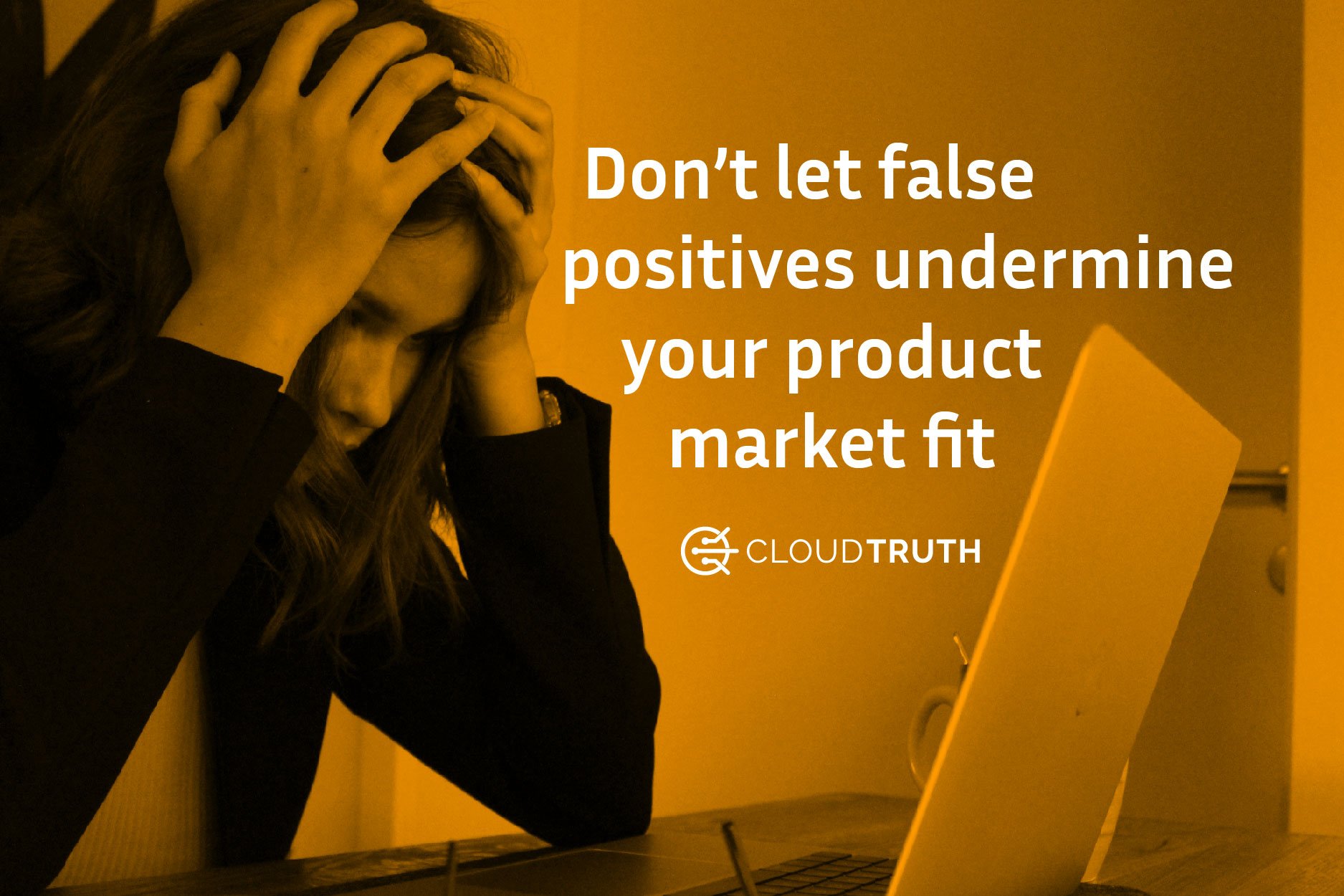
This is the sixth post of seven – “The CloudTruth Journey to Product-Market Fit” series.
One of the most challenging — and critical — components of any startup’s journey is the identification of product-market fit: That is, the precise market niche and product offering that your team is best suited to provide. And one of the biggest reasons that this is so challenging is that it can be very tricky to tell the difference between real customer needs and false positives.
When my co-founders and I first launched CloudTruth, we knew that determining our target market and finding the best solution to meet that market’s needs was the number one priority. We built out an extensive interview process to learn from our potential customers about their needs and pain points. We interviewed more than 400 people and spent countless hours documenting and analyzing those interviews before ultimately deciding on our company’s direction. But even with all that data, we still found ourselves struggling at times to distinguish false positives from useful feedback.
In fact, early in our process, we realized that what we had thought was a significant trend was not in fact as promising as it seemed. Survey respondents were telling us that a particular pain point was important to them, and we were seriously considering going in a direction that would address those issues. But eventually, we realized that the pain these customers had identified simply wasn’t significant enough for them to spend any meaningful time or money on solving — and so we ended up refocusing on an alternate idea that turned out to be much more salient.
Through this process, we learned a lot about what it takes to identify false positives and keep them from clouding your judgment. Of course, the specifics will vary depending on your industry, but I’m confident that many of the strategies we’ve developed to check our own assumptions and biases could be helpful no matter what market you’re targeting.
-
Triangulate Around Your Idea
First, while it can be tempting to simply share your idea and solicit feedback directly, a much more reliable approach is to triangulate around your idea. Instead of simply presenting the product you’ve got in mind, start by just describing the general problem area you’re interested in. Probe the interviewee to get a sense of how much that pain point is resonating with them, whether it’s something they’ve experienced a lot or something that may seem plausible to them but is clearly not a major issue.
Next, consider sharing vague, broad product ideas rather than specific descriptions. If you’re thinking about selling a spork, don’t say, “would you buy a spoon with short prongs on the end?” Instead, ask the potential customer, “would it be useful to somehow combine the features of different utensils? How can you imagine that working?” The goal is to lead the interview subject to describe their ideal solution, rather than getting an immediate yes-or-no response to your preconceived product idea. In this manner, you can triangulate around your market and product, ensuring that you’re getting feedback that’s as honest and useful as possible.
-
Identify and Dismiss Outliers
When we first began our interview process, we got excited every time a potential customer shared any kind of extreme opinion. Strongly-held opinions can come across as more convincing, and it can be tempting to let a single loud voice drown out a quieter majority. However, these strong opinions are often not representative of the larger market need, and the point of the product-market fit process is to identify a business plan that will be sustainable with broad appeal — not to meet the needs of a tiny (if vocal) minority.
As such, we intentionally dismissed a certain percentage of interviews in which people seemed to either absolutely love or absolutely hate the concept. Removing these outliers allowed us to smoothen the curve and ensure we were moving forward based on reliable data. Importantly, this assumes that we were getting some number of false positives as well as some false negatives. It’s equally important to stay grounded in the face of outsized enthusiasm as it is to push through one or two negative interviews: Even if a few people aren’t on board, that doesn’t mean you need to scrap your entire idea.
-
Vary Your Survey Formats
Another helpful strategy to reduce the number of false positives in your data set is to intentionally experiment with a variety of different interview and survey formats. At CloudTruth, we actually used four different survey formats in order to broaden the types of input we would receive. We started with a set of high-level questions designed to gauge interest in the general area we were exploring. As we started to get diminishing returns, hearing similar answers over and over again, we progressively moved towards narrower and narrower types of questions.
Of course, it’s important to use the appropriate format for the phase of the process that you’re in. If you narrow the scope too soon, it’s more likely that you’ll end up focused on the wrong idea. But if you stay broad for too long, you’ll struggle to identify the specific market niche and product design that you need to move forward as a business. Striking a balance is essential — and the best way to do that is to experiment, analyze the results, and iterate continuously.
-
Search for the “Hard Yes”
Finally, it’s essential to learn the difference between a “soft yes” and a “hard yes.” A hard yes is a definitive, confident answer you can trust, while a soft yes is a wavering, uncertain affirmation. A hard yes will sound something like, “I have this problem and your solution would help me, today if it existed.” Conversely, a hard no may sound like, “I don’t see any value in what you’re proposing,” or, “The problem you’re trying to solve just doesn’t seem that important to me.”
A soft yes means that someone might like the idea, and they might even say that they think they would buy the product, but without much certainty or specificity. These are the interviewees who agree on the phone to be a beta tester, but then they disappear and stop responding to follow-up requests. These folks can turn into major time sinks, as you chase them and their apparent interest in your business, only to eventually realize that they really weren’t all that convinced and may have just been being polite.
To avoid falling prey to the soft yes, it’s essential first and foremost to be aware of the issue. Once you’re on the lookout, it’s much easier to spot these responses and head them off before it’s too late. Make sure to ask pointed, direct questions to get to the bottom of how the interview subject really feels, and emphasize that you’re looking for their honest opinion (so they don’t need to worry about offending you).
***
Ultimately, there’s no way to 100% guarantee that you won’t get caught by a false positive. But with the four strategies outlined above, you’ll be well-prepared to identify false positives when they occur and set yourself up to get the most accurate, helpful feedback you can.
To learn more about how the CloudTruth team has approached our own development process, take a look at this recent blog post on the CloudTruth journey to product-market fit. And if you’d like some more information about the product (and market) we ended up settling on, check out our white paper or sign up to be an early adopter tester today!
Read the next article in our “CloudTruth Product Market Fit” series:
To Find Product-Market Fit, Start at 30,000 Feet — But Don’t End There
Join ‘The Pipeline’
Our bite-sized newsletter with DevSecOps industry tips and security alerts to increase pipeline velocity and system security.



